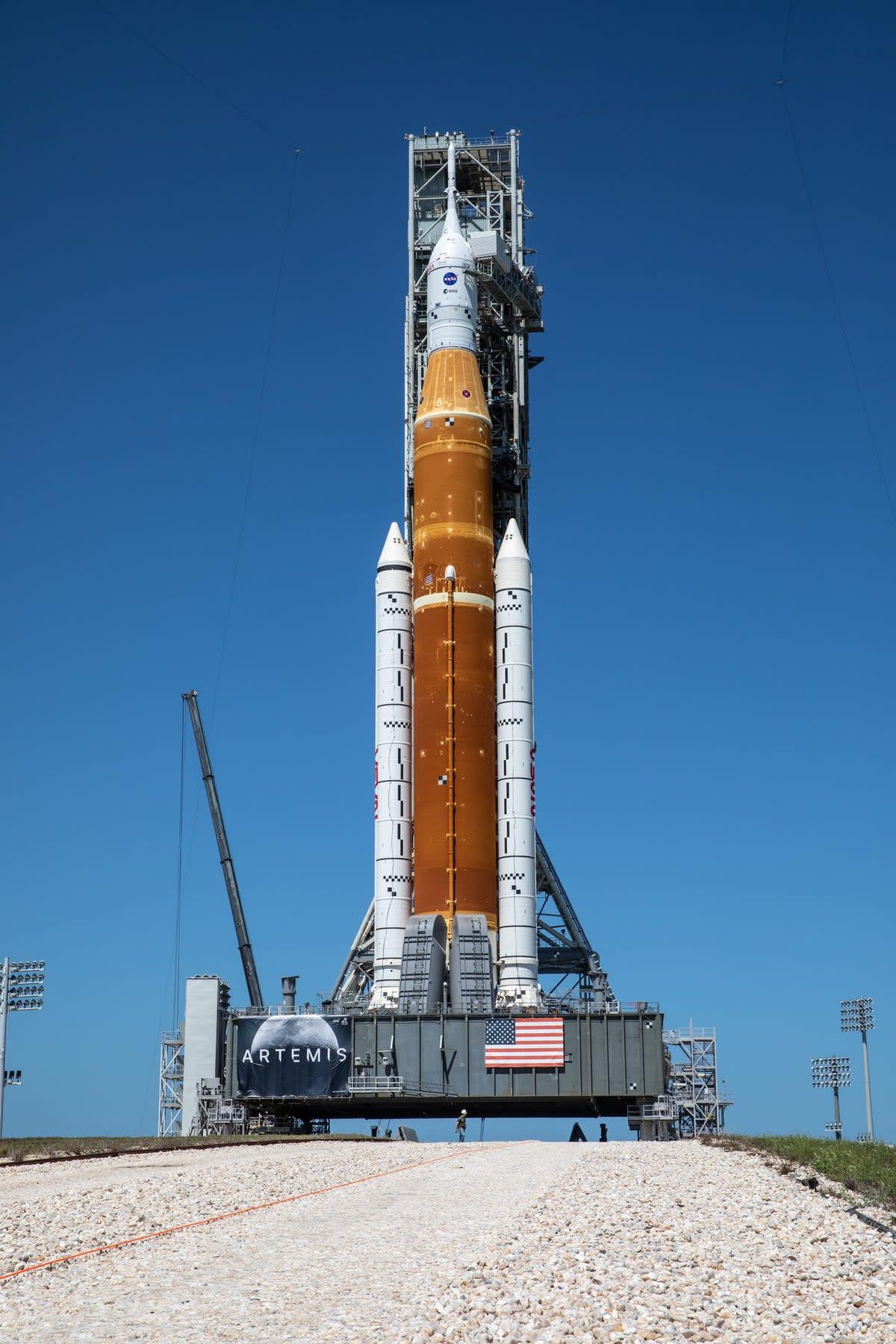What you need to know about Nasa’s next big space launch

Monday, 29 August could make the date of the biggest rocket launch to take place since 1973, as Nasa hopes to launch its big new Moon rocket on its maiden test flight.
The Artemis I mission, a test flight of Nasa’s Space Launch System (SLS) rocket and Orion spacecraft, is scheduled to lift off no earlier than 8.33am EDT on 29 August, with backup launch windows on 2 and 5 September in case weather or other concerns cause Nasa to scrub the launch. The launch and pre-launch activities will be carried live on Nasa TV, the Nasa app, and the space agency’s website.
The SLS rocket will be the most powerful rocket to ever fly. Standing 322 feet tall and generating 8.8 million pounds of thrust, it just edges out the Saturn V rocket that took Apollo astronauts to the Moon, and which though it stood 363 feet tall, generated only 7.6 million pounds of thrust. The last Saturn V was launch in 1973, without a crew, carrying the Skylab space station.
The Artemis I launch will use the same launchpad as the first launch of a Saturn V in 1969 during the Apollo program, Launch Complex 39B at Nasa’s Kennedy Space Center, in Florida.
The Orion spacecraft is a capsule that looks somewhat similar to the Apollo space capsule of the 1970s, and the test flight will see Orion travel to, orbit around, and return from the Moon after 42 days in space. The spacecraft will carry three mannequins designed to collect data on how a similar flight could affect future human astronauts and will fly more than 40,000 miles beyond the Moon, the furthest a vehicle designed to be crewed by humans has ever flown.
And human astronauts are waiting in the wings: Artemis I is the first mission of Nasa’s Artemis Moon program, the space agency’s program to return humans to the lunar surface by 2025. If all goes well with Artemis I, Artemis II will carry a human crew on a lunar flyby in May 2024, while sometime in 2025, Artemis III will land humans on the Moon for the first time since the 1970s.
Nasa plans to launch multiple Artemis missions lasting into the 2030s, with astronauts constructing a lunar space station as well as long-term bases on the Moon’s south polar region. The program will not just advance lunar science, but will provide Nasa an opportunity to test technologies and operations and skills necessary to one day take on a larger challenge — sending astronauts to Mars in the 2040s.

